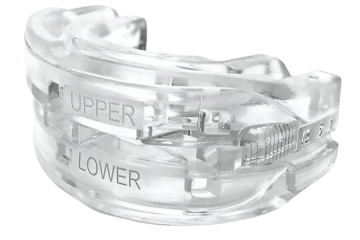Screw compressors are vital components in various industries, providing compressed air efficiently and reliably. Understanding their functioning through a screw compressor diagram can demystify their complexity and enhance maintenance and troubleshooting efforts. In this comprehensive guide, we’ll delve into the anatomy and operation of screw compressors through a detailed diagram, offering insights into their functionality and applications.
Anatomy of a Screw Compressor: A screw compressor comprises several essential components working in harmony to compress air effectively. At its core are two helical rotors – the male and female rotors – housed within a casing. The male rotor features convex lobes, while the female rotor has concave lobes, enabling them to intermesh closely without direct contact.
- Male Rotor: The male rotor is typically driven by a motor and rotates within the compressor casing. Its convex lobes mesh with the concave lobes of the female rotor, creating a series of compression chambers between them.
- Female Rotor: The female rotor also rotates within the casing, synchronized with the male rotor. Its concave lobes complement the shape of the male rotor, facilitating the compression process.
- Compression Chambers: As the rotors rotate, the compression chambers between them gradually decrease in volume, trapping and compressing the incoming air. This compression occurs continuously as the rotors move, resulting in a steady flow of compressed air.
- Inlet and Outlet Ports: Positioned at opposite ends of the compressor casing, the inlet port allows atmospheric air to enter the compression chambers, while the outlet port releases the compressed air into the system.
- Sealing Mechanism: To prevent air leakage between the rotors, sealing mechanisms such as sealing strips or timing gears are employed. These ensure optimal compression efficiency by maintaining a tight seal between the rotors and the casing.
Operation of a Screw Compressor: Understanding the operation of a screw compressor involves grasping the sequence of events within the compression chambers as air undergoes compression.
- Inlet Phase: At the beginning of the compression cycle, atmospheric air enters the compressor through the inlet port. The rotation of the male and female rotors creates a vacuum effect, drawing air into the compression chambers.
- Compression Phase: As the rotors continue to rotate, the volume of the compression chambers diminishes, causing the trapped air to undergo compression. The intermeshing lobes of the rotors gradually reduce the chamber volume, increasing the air pressure within.
- Discharge Phase: Once the compression chambers reach their minimum volume, the compressed air is forced out through the outlet port into the system. The discharge phase marks the completion of one compression cycle, with the process repeating continuously as long as the compressor operates.
Advantages of Screw Compressors: Screw compressors offer several advantages over traditional reciprocating compressors, making them preferred choices in various industrial applications.
- High Efficiency: Screw compressor deliver higher efficiency levels compared to reciprocating compressors, thanks to their continuous compression process and minimal pulsation.
- Smooth Operation: The intermeshing rotors of screw compressors result in smoother and quieter operation, reducing vibrations and noise levels in the working environment.
- Compact Design: Screw compressors feature a compact and space-efficient design, making them suitable for installations where space is limited.
- Versatility: Screw compressors are capable of handling a wide range of air volumes and pressures, offering versatility across different industrial applications.
Applications of Screw Compressors: Screw compressors find extensive use across various industries due to their reliability, efficiency, and versatility.
- Manufacturing: Screw compressors power pneumatic tools and equipment in manufacturing facilities, supporting operations such as assembly, machining, and material handling.
- Automotive: In the automotive industry, screw compressors are utilized for tasks ranging from painting and coating to powering pneumatic lifts and tools in maintenance workshops.
- HVAC Systems: Screw compressors play a crucial role in HVAC (Heating, Ventilation, and Air Conditioning) systems, providing compressed air for climate control and refrigeration applications in commercial and residential buildings.
- Food and Beverage: Screw compressors are essential in food and beverage processing, powering equipment for packaging, bottling, and refrigeration processes.
Maintenance and Troubleshooting: Regular maintenance is essential to ensure optimal performance and longevity of screw compressors. Key maintenance tasks include:
- Lubrication: Proper lubrication of the rotor bearings and seals is critical for smooth operation and to prevent premature wear and damage.
- Filter Replacement: Regular replacement of air and oil filters helps maintain air quality and prevents contamination of the compressor oil.
- Inspection of Seals and Gaskets: Periodic inspection of seals and gaskets ensures they are intact and free from leaks, minimizing air loss and maximizing efficiency.
- Temperature and Pressure Monitoring: Monitoring operating temperatures and pressures allows for early detection of potential issues such as overheating or pressure fluctuations, enabling timely intervention and troubleshooting.
Conclusion: A screw compressor diagram offers valuable insights into the inner workings of these indispensable machines, empowering operators and maintenance personnel to better understand, operate, and maintain them effectively. By grasping the anatomy, operation, advantages, and applications of screw compressor industries can harness their full potential to enhance productivity and efficiency across a wide range of applications.



